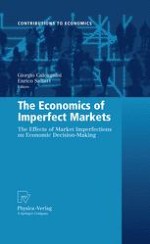2009 | OriginalPaper | Buchkapitel
9. The Effects of Uncertainty and Sunk Costs on Firms’ Decision-Making: Evidence from Net Entry, Industry Structure and Investment Dynamics
verfasst von : Vivek Ghosal
Erschienen in: The Economics of Imperfect Markets
Verlag: Physica-Verlag HD
Aktivieren Sie unsere intelligente Suche, um passende Fachinhalte oder Patente zu finden.
Wählen Sie Textabschnitte aus um mit Künstlicher Intelligenz passenden Patente zu finden. powered by
Markieren Sie Textabschnitte, um KI-gestützt weitere passende Inhalte zu finden. powered by
